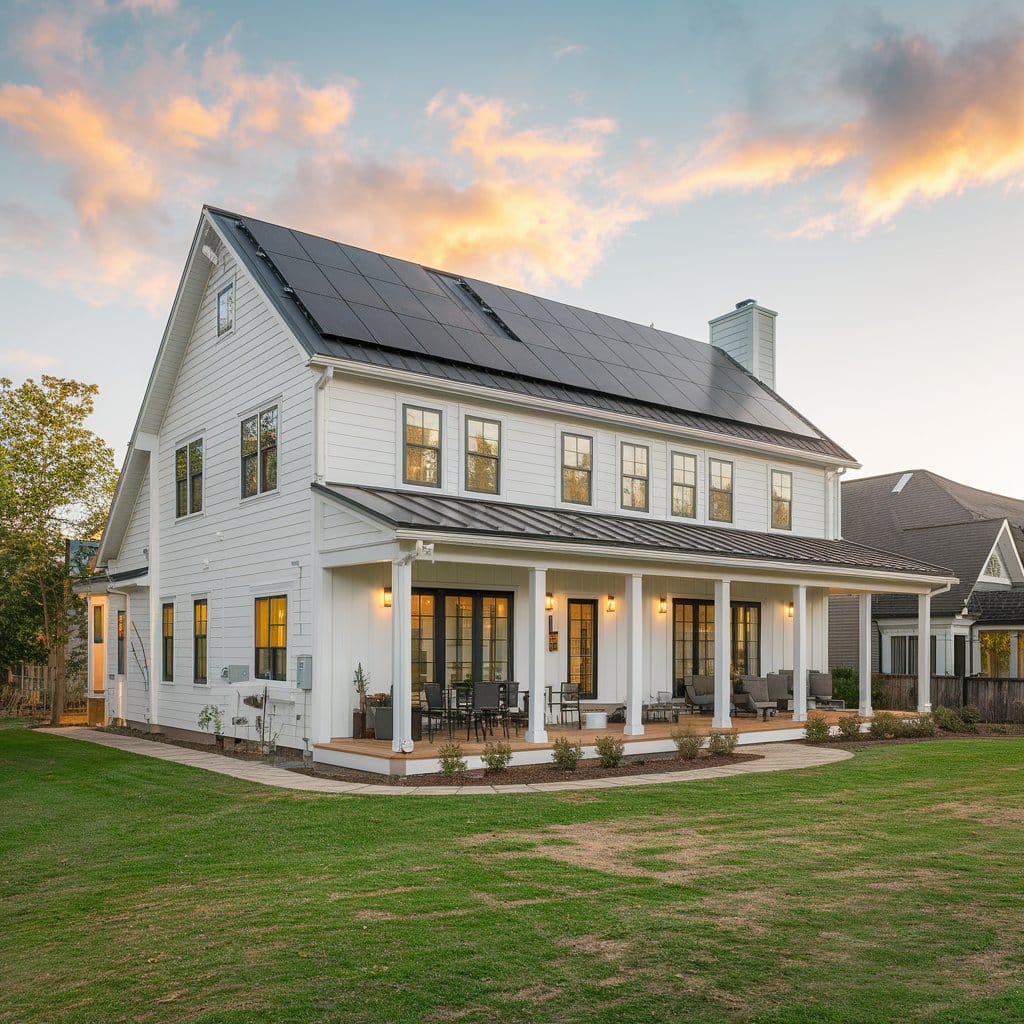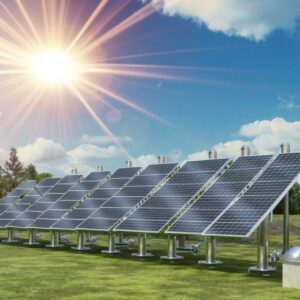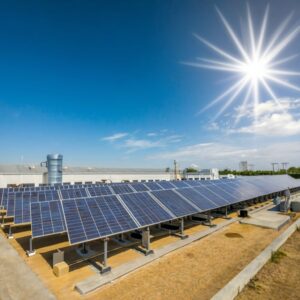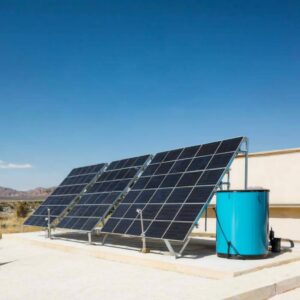
solar energy for homes
Introduction
As the world grapples with climate change and the quest for sustainable energy sources, solar energy has emerged as a viable solution for homeowners. Harnessing the sun’s power not only provides a renewable energy source but also offers significant economic benefits. This comprehensive guide explores the various aspects of solar energy for homes, including its benefits, installation processes, financial implications, and common questions homeowners may have.
What is Solar Energy?
Solar energy is the energy derived from the sun’s rays. It can be harnessed using various technologies, primarily through solar panels, which convert sunlight into electricity. This renewable energy source is abundant, sustainable, and increasingly becoming a preferred option for homeowners looking to reduce their carbon footprint and energy costs.
Why Choose Solar Energy for Homes?
1. Environmental Benefits
One of the primary motivations for adopting solar energy is its positive impact on the environment. By generating electricity from sunlight, homeowners can significantly reduce their reliance on fossil fuels, which are the main contributors to greenhouse gas emissions. This transition not only helps in combating climate change but also preserves natural resources for future generations.
2. Financial Savings
Investing in solar energy can lead to substantial savings on electricity bills. Once installed, solar panels generate free electricity, allowing homeowners to reduce their utility costs significantly. In many cases, homeowners can even achieve net-zero energy usage, meaning they produce as much electricity as they consume.
3. Increase in Property Value
Homes equipped with solar energy systems often see an increase in property value. Studies have shown that homes with solar panels sell for more than those without. Potential buyers view solar energy as an attractive feature, knowing it can reduce their long-term energy expenses.
4. Energy Independence
Using solar energy allows homeowners to become less dependent on utility companies. By generating their own electricity, they are less vulnerable to fluctuations in energy prices. This independence can provide peace of mind, especially during times of energy crises or price hikes.
Understanding the Components of a Solar Energy System
To effectively harness solar energy for homes, several components work together in a solar energy system:
1. Solar Panels
Solar panels, typically made of silicon, are the most visible components of a solar energy system. They capture sunlight and convert it into electricity through photovoltaic (PV) cells.
2. Inverters
The inverter plays a crucial role by converting the direct current (DC) generated by the solar panels into alternating current (AC), which is the type of electricity used in homes.
3. Battery Storage
While not all solar energy systems include battery storage, it allows homeowners to store excess energy generated during the day for use at night or during cloudy days. This enhances energy independence and efficiency.
4. Mounting Systems
Solar panels are mounted on rooftops or ground installations. The mounting system ensures that the panels are securely positioned at the optimal angle for maximum sunlight exposure.
5. Monitoring Systems
Many modern solar energy systems come equipped with monitoring technology that allows homeowners to track their energy production and consumption in real-time. This information can help optimize energy usage and improve efficiency.
The Solar Installation Process
1. Consultation and Site Assessment
The first step in installing solar energy for homes involves a consultation with a solar provider. During this assessment, a technician evaluates the roof’s condition, orientation, and shading to determine the feasibility of a solar installation.
2. System Design and Proposal
Once the site assessment is complete, the solar provider will design a customized system tailored to the homeowner’s energy needs. This proposal includes details about the number of panels, inverter type, and overall system cost.
3. Permitting and Financing
Before installation can begin, necessary permits must be obtained from local authorities. Homeowners can also explore financing options, including solar loans, leases, or power purchase agreements (PPAs), to make the system more affordable.
4. Installation
The installation process typically takes one to three days, depending on the system’s size and complexity. Professional installers will mount the solar panels, connect the inverter, and ensure that the system is functioning correctly.
5. Inspection and Activation
After installation, the system must be inspected by local authorities to ensure compliance with safety standards. Once approved, the system is activated, and homeowners can start generating their own electricity.
Financial Incentives for Solar Energy
Investing in solar energy for homes can be financially beneficial, especially with the availability of various incentives:
1. Federal Tax Credit
The federal government offers a solar tax credit that allows homeowners to deduct a percentage of the cost of their solar energy system from their federal taxes. This credit significantly reduces the overall investment.
2. State and Local Incentives
Many states and local governments provide additional incentives, including rebates, grants, and performance-based incentives. Homeowners should research available programs in their area to maximize their savings.
3. Net Metering
Net metering allows homeowners to sell excess energy produced by their solar panels back to the grid. This arrangement can offset electricity costs, providing further financial benefits.
Common Misconceptions About Solar Energy
Despite its growing popularity, several misconceptions about solar energy persist:
1. Solar Energy is Too Expensive
While the upfront cost of solar energy systems can be significant, the long-term savings on electricity bills, coupled with tax credits and incentives, make solar energy a cost-effective option.
2. Solar Panels Only Work in Sunny Climates
Solar panels can generate electricity even on cloudy days, although their efficiency may decrease. Technological advancements have improved solar panel performance, making them effective in various weather conditions.
3. Solar Energy Requires Extensive Maintenance
Solar energy systems are relatively low maintenance. Regular cleaning and occasional inspections are typically sufficient to ensure optimal performance.
FAQs About Solar Energy for Homes
1. How long do solar panels last?
Most solar panels come with a warranty of 25 years and can last even longer with proper maintenance. Many panels continue to produce electricity beyond their warranty period, albeit at a reduced efficiency.
2. Will solar panels work on my roof?
Most roofs can accommodate solar panels, but factors such as shading, orientation, and structural integrity need to be assessed. A professional solar provider can conduct an evaluation to determine suitability.
3. What happens if I generate more energy than I use?
If you generate more energy than you consume, you may be eligible for net metering, which allows you to sell excess energy back to the grid, effectively reducing your electricity costs.
4. Are there financing options available for solar installations?
Yes, there are various financing options, including solar loans, leases, and power purchase agreements (PPAs). These options can make solar energy more affordable for homeowners.
5. How much can I save by switching to solar energy?
Savings vary based on factors such as location, energy consumption, and the size of the solar system. On average, homeowners can save thousands of dollars over the system’s lifespan.
Conclusion
Solar energy for homes represents a sustainable and financially advantageous option for homeowners seeking to reduce their energy bills and environmental impact. By understanding the benefits, installation process, and available incentives, homeowners can make informed decisions about integrating solar energy into their lives. As technology continues to advance and awareness grows, the future of solar energy looks bright, paving the way for a more sustainable and energy-independent society.






